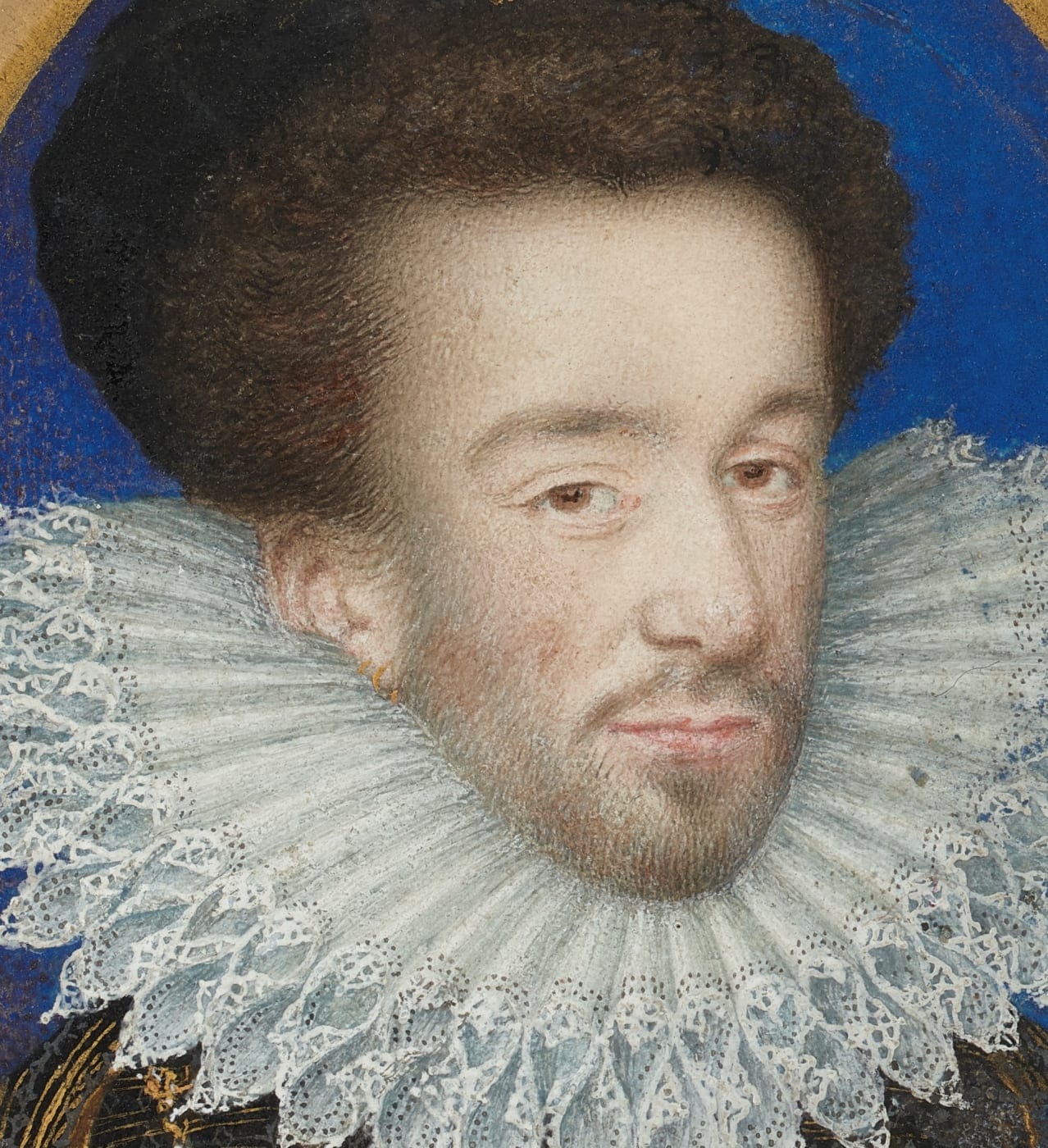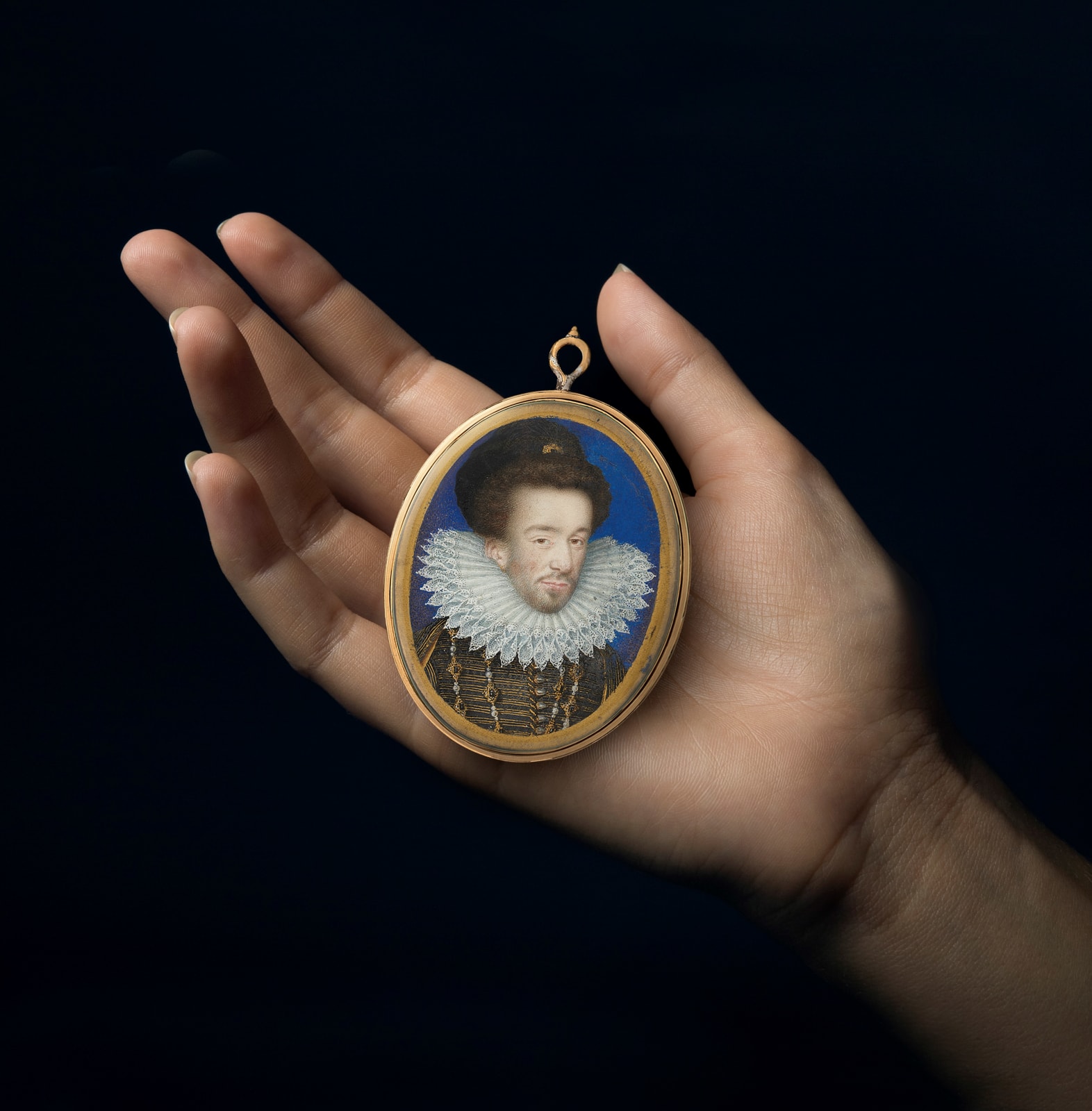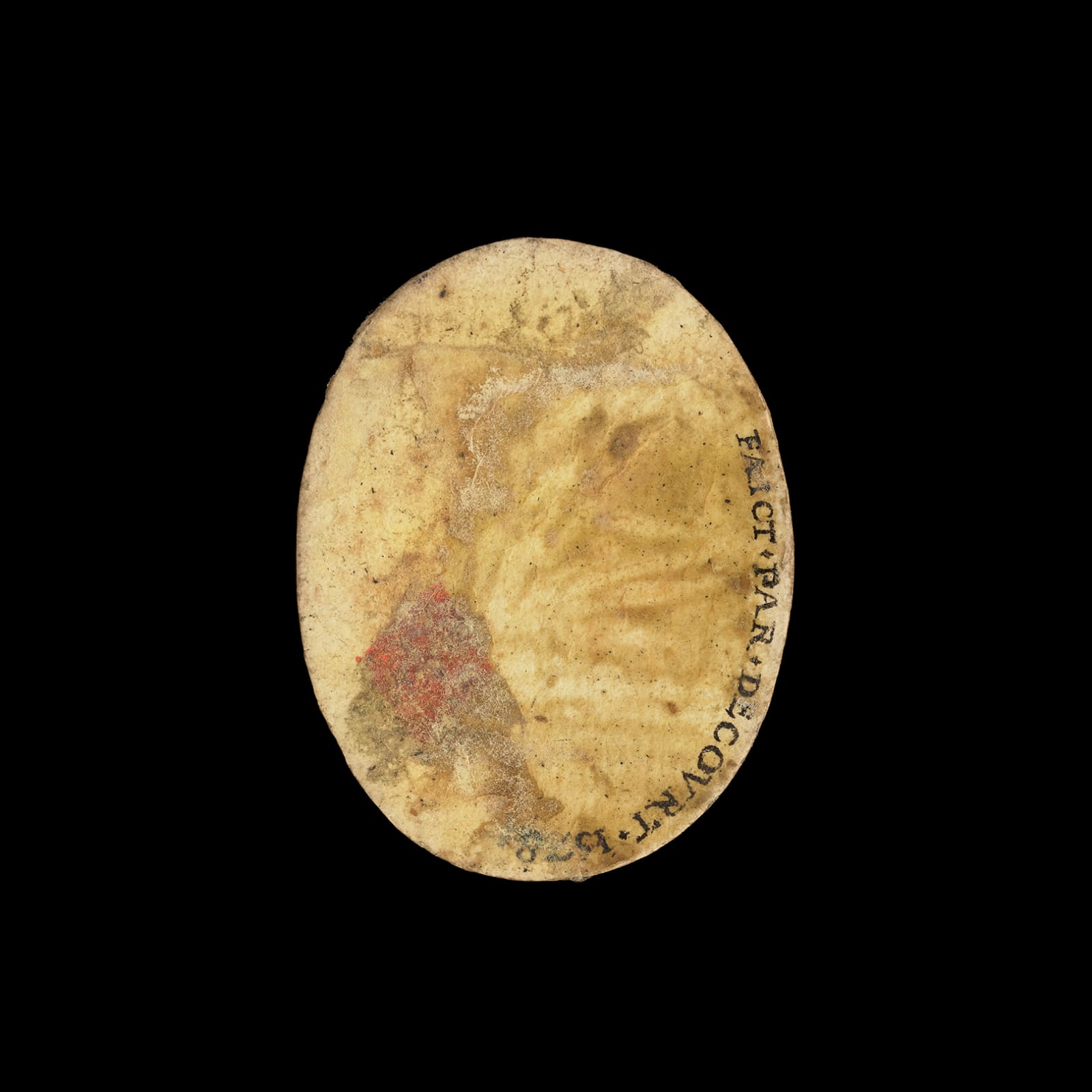Both the artist and the subject of this intricately detailed, jewel-like miniature painting - bought 'unseen' during lockdown in 2020 - are exceptional discoveries.
The 57mm tall likeness was originally described as Sir Walter Raleigh, but experts at Philip Mould & Co soon discovered it was an image of Henri III, King of France (1551-1589), whose remaining contemporary images are extremely scarce.
However, a second transformative discovery was made when a conservator opened the painting's delicate frame and found the signature, 'Decourt' along with the date '1578', on the reverse.
Unusually, despite Decourt's high profile and status at the time, no signed portrait had been unequivocally ascribed to this highly significant court artist. Until now…
Jean Decourt (c.1530-c.1585) was a remarkable painter, with an exquisite eye for detail, who had an illustrious career. On the death of Francois Clouet (1501-1572), Decourt assumed the role of official court artist to King Charles IX of France, albeit he is also documented to have been the official artist for Mary, Queen of Scots (1542-1587) and recorded as painting Elizabeth I (1533 - 1603) and her favourite, Robert Dudley Earl of Leicester (1532 - 1588), during trips to England in 1565/6.
"...Decourt assumed the role of official court artist to King Charles IX of France, albeit he is also documented to have been the official artist for Mary, Queen of Scots (1542-1587) and recorded as painting Elizabeth I (1533 - 1603) and her favourite, Robert Dudley Earl of Leicester (1532 - 1588), during trips to England in 1565/6."
Henri had been elected King of Poland, in recognition of his military valour, but was recalled to Paris in 1574 to replace his dead brother, Charles IX. Due to his inability to prevent the continued escalation of the Wars of Religion (1562-98) and his increasing unpopularity as a monarch, Henri was assassinated (notable in itself as the first act of regicide of a French monarch) - and his reputation suffered further during the French Revolution; when it was dangerous to own royal portraits, which for subsequent centuries, all but wiped his face from history.
The life - and in particular, the sexuality - of Henri III has long been discussed and debated by historians. 16th century writers often referenced his fondness for wearing women's clothing at court entertainments and for his male companions, dubbed at the time 'mignons', who slavishly copied the king's dress. Indeed, the contemporary diarist, Pierre de L'Estoile's (1546-1611) description of the mignons - who wore "their hair long, curled and recurled by artifice, with little bonnets of velvet on top of it like whores in the brothels, and the ruffles on their linen shirts [ruffs] are of starched finery and one-half foot long, so their heads look like St John's on a platter" - could equally be applied to the fashions worn by Henri in this miniature.
It was also L'Estoile who commented on the king's own fondness for cross-dressing: "The king made jousts, tournaments, ballets, and a great many masquerades, where he was found ordinarily dressed as a woman, working his doublet and exposing his throat, there wearing a collar of pearls and three collars of linen, two ruffled and one turned upside down, in the same way as was then worn by the ladies of the court."
The life - and in particular, the sexuality - of Henri III has long been discussed and debated by historians...
"The king made jousts, tournaments, ballets, and a great many masquerades, where he was found ordinarily dressed as a woman, working his doublet and exposing his throat, there wearing a collar of pearls and three collars of linen, two ruffled and one turned upside down, in the same way as was then worn by the ladies of the court." - Pierre L'Estoile, Contemporary Diarist
This delicate, sensitive and incredibly realistic likeness of Henri III contains all the hallmarks of Decourt's style, in the extraordinary meticulousness of the details, the particular attention paid to the clothing, the jewels treated in volume with their cast shadows, the incredibly lifelike, modelling of the face (which is slightly pale) and in the artist's habit of placing the reflection of light in the pupil of the eye, rather than the iris as Clouet did.
Exactly how a miniature made in 16th century Paris ended up in a country sale in the UK is now the subject of further research, although it is believed the work might have crossed the Channel during the French Revolution, escaping the destruction which befell so many royal and aristocratic portraits.
Celine Cachaud, portrait miniatures specialist, now working at the Institut national d'histoire de l'art with the Musée du Louvre, assisted with the research into the portrait last year. In her opinion, she affirms: "We can now firmly and finally imprint 16th century royal portraiture with Decourt's name. This groundbreaking discovery will have a major impact on the study of late Valois portraiture and miniature painting in years to come."
"We can now firmly and finally imprint 16th century royal portraiture with Decourt's name. This groundbreaking discovery will have a major impact on the study of late Valois portraiture and miniature painting in years to come." - Celine Cachaud, portrait miniatures specialist at the Institut national d'histoire de l'art with the Musée du Louvre
The portrait of Henri was very likely to have been painted in the Louvre, which was the royal residence at the same time that the miniature was created.
Philip Mould says: "This work is a French National Treasure - a hugely significant unpublished image of a misunderstood King, and confirmation of Jean Decourt's immense talent. It would be wonderful if it could 'come home' to Paris, as I believe that is where it truly belongs. We have therefore given the Louvre the first opportunity to purchase it."
IMAGE
Jean Decourt (De Court) (circa 1530 – after 1585)
Portrait of Henry III, King of France
Bodycolor highlighted with gold on vellum
Annotated on the back by a contemporary hand (by the artist?): faict·par·decovrt·1578
H. 57 mm
Related Articles
Artnet: An Art Dealer Discovered a Rare Miniature Portrait of France's Cross-Dressing King
Smithsonian Magazine: Petite Portrait of Henry III, King Who Challenged Sexual Norms in 16th-Century France, Discovered
Art Daily: "Groundbreaking" discovery of rare portrait of Henri III, King of France, made in UK
Independent: Miniature portrait of cross-dressing French king found in the UK
Evening Express: Miniature portrait of French king known for cross-dressing discovered in UK
The Northern Echo: French king Henri III was known for cross-dressing
Sunday World: Miniature portrait of French king known for cross-dressing discovered in UK






